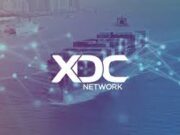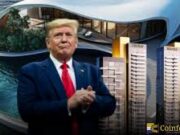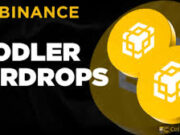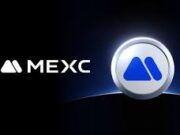In a noteworthy turn within the world of cryptocurrencies and regulatory policy, Charles Hoskinson — founder of Cardano and co-founder of Ethereum — has publicly voiced strong optimism about the appointment of the new CFTC chair, believing the selection signals fresh momentum for the digital-asset ecosystem. (Binance)
A Brief Look at the Key Figures
Let’s take a moment to situate the individuals at the center of this development:
- Charles Hoskinson. An influential figure in the blockchain space, Hoskinson co-founded Ethereum and later launched Cardano via his engineering outfit Input Output Global (IOG). (Wikipedia)
- The new CFTC chair (widely reported to be Michael Selig in recent commentary) whose arrival has prompted Hoskinson’s comments. (Binance)
- The CFTC itself: The U.S. federal regulator tasked with overseeing derivatives markets and increasingly charged with deciphering how digital assets fit into that landscape.
With these in mind, the synergy between regulatory leadership and digital-asset ecosystem stakeholders has taken on heightened significance.
Why Hoskinson’s Endorsement Is Noteworthy
Hoskinson’s endorsement carries weight for several reasons.
First, it underscores the importance of regulatory clarity in the cryptocurrency sector. Hoskinson has long advocated for defined frameworks around digital assets — especially as his own projects push into global markets. (DL News) When someone of his profile publicly expresses optimism about a regulator’s leadership, it signals that the industry believes a turning point may be on the horizon.
Second, the endorsement reflects the growing alignment (or at least a desire for alignment) between crypto innovators and government institutions. Historically there has been tension; but forward-looking voices like Hoskinson’s seem to suggest collaboration rather than confrontation may yield better outcomes.
Lastly, it may serve as a kind of leading indicator — showing that players in the space expect the regulatory environment to evolve in ways that could enable innovation, investment and adoption rather than merely enforcement. This is meaningful for entrepreneurs, institutional investors and everyday participants.
What the Comment Says And What It Suggests
In his remarks, Hoskinson affirmed his confidence in the new chair’s leadership qualities and expressed hope that this appointment would bring “positive developments” to regulation in the United States. (Binance)
Here are a few threads to highlight:
- Confidence in leadership: Hoskinson’s praise suggests he sees the chair as both capable and aligned, in some respects, with the needs of the digital-asset sector.
- Hope for regulatory progress: Implicit in his comments is the belief that the appointment could catalyze regulatory clarity, which has long been an obstacle for many blockchain initiatives.
- U.S. as a meaningful jurisdiction: While crypto is global, Hoskinson’s focus on the U.S. regulator underscores the importance of what happens in the American regulatory framework for the broader ecosystem.
The Bigger Picture: Regulatory Landscape and the Crypto Industry
To appreciate the broader significance of these remarks, it helps to peer into the regulatory dynamics at play.
Regulatory Advance vs. Regulatory Uncertainty
For years, the crypto industry has been navigating uncertain regulatory waters. Many projects have operated in ambiguity — raising questions about securities laws, derivatives regulation, token classification, and cross-border compliance. Hoskinson himself has stressed the need for consistent, stable regulation rather than ad-hoc enforcement. (DL News)
Now, with a new chair at the CFTC and comments from influential industry figures, there appears to be a coordinated ambition to reduce that ambiguity.
CFTC’s Role in Digital Assets
The CFTC, as the regulator of futures, swaps and derivatives, has a critical role in how crypto products — especially ones that might be deemed commodities — are treated. Selection of the chair matters because the chair helps set priorities, steer enforcement policy, shape regulatory dialogues and influence legislative interface.
Innovation + Regulation: A Delicate Balance
Blockchain projects like Cardano aim to push the envelope of what’s possible — scalability, decentralisation, interoperability, real-world asset tokenisation. But innovation without regulatory accommodation can run into friction or legal risk. Conversely, regulation without innovation stifles development. Hoskinson’s optimism indicates he sees the possibility of a productive balance: regulation that enables, rather than impedes.
How This Could Play Out in Practice
With that context, let’s examine plausible pathways — what might unfold as a result of this regulatory moment.
1. More Transparent Rule-making
If the new chairman is serious about industry engagement, we might see clearer guidance or frameworks that define how tokens, digital asset derivatives, and cross-market platforms are regulated. In turn, ecosystem participants may benefit from reduced legal uncertainty and increased confidence.
2. Increased Institutional Participation
As regulation becomes more defined and predictable, institutional players — banks, asset managers, hedge funds — may feel more comfortable entering crypto markets. That could bring new capital, new financial infrastructure, and deeper market liquidity.
3. A Growth Phase for Real-World Use Cases
With clarity around compliance and legal status, projects that bridge traditional finance and crypto — such as tokenised real-world assets (real estate, commodities, bonds) — may accelerate. This aligns with themes Hoskinson has emphasised: moving beyond pure speculation toward utility and integration. (DL News)
4. Competitive Global Positioning
If the U.S. regulatory regime becomes more facilitative (while still robust), the country could enhance its attractiveness as a crypto innovation hub — rather than watching projects relocate to more accommodating jurisdictions. That has geopolitical and economic implications.
Considerations and Cautions
While the tone is optimistic, it’s wise to approach with tempered expectations.
- Leadership change ≠ instant transformation. A new regulatory leader may set tone, but entrenched processes, legislation, and stakeholder negotiations remain complex and slow.
- Regulatory risk remains. Despite improved leadership, rules may still tighten in certain domains (e.g., consumer protection, anti-money-laundering, cross-border flows), which could pose new constraints on innovation.
- Global fragmentation persists. Even if the U.S. achieves greater clarity, other jurisdictions may adopt divergent approaches, complicating cross-border operations for crypto projects.
- Industry cooperation still matters. Regulators may be looking for the industry to step up in compliance, transparency and good governance — so positive outcomes will likely require responsible behaviour from innovators as well.
Why This Holds Relevance for the Crypto Ecosystem
When we reflect on why Hoskinson’s comments matter, several layers of relevance emerge.
- For investors: Regulatory clarity influences risk profiles, valuations, liquidity, and institutional entry.
- For developers and founders: A clearer regulatory horizon means that building roadmaps, raising capital, and deploying products may become more feasible and less fraught with legal surprise.
- For policymakers and the public: How crypto is regulated has broader implications for financial stability, consumer protection, innovation, competition and the role of digital finance in society.
- For users and broader adoption: Ultimately, greater clarity and better-designed regulation can help make crypto tools more accessible, mainstream and trusted.
In Conclusion
Charles Hoskinson’s public expression of confidence in the new CFTC chair reflects more than just personal optimism — it signals a potential inflection point in how regulation and innovation interact in the digital-asset space. When a major ecosystem figure says a regulatory appointment is a positive development, it suggests that the industry expects meaningful shifts ahead — not just incremental tweaks.
That said, optimism must be matched with action. Both regulatory agencies and industry participants will need to show up — regulators by articulating frameworks, enforcing wisely and engaging constructively; industry by building responsibly, upholding transparency and aligning with regulatory goals.
In short: we may be entering a phase where the question is less whether crypto innovation and regulatory oversight can coexist, and more how they will co-evolve in a way that benefits the broader ecosystem.
Sources:
- “Cardano Founder Expresses Confidence in New CFTC Chair”, Binance News. (Binance)
- Wikipedia entry on Charles Hoskinson. (Wikipedia)
- Cardano and regulatory commentary (“Why Cardano’s Charles Hoskinson isn’t miffed by White House snub”). (DL News)



























